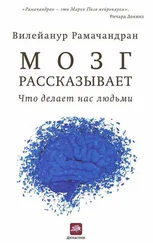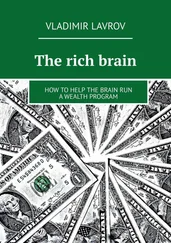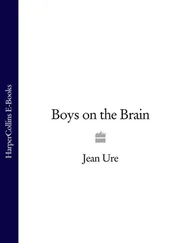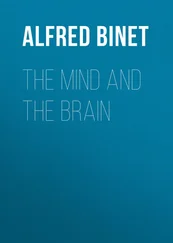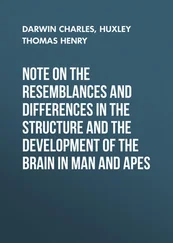This idea is quite similar to Darwin’s own explanation for the origin of secondary sexual characteristics — his so-called theory of sexual selection. The progressive enlargement of the male peacock tail, for example, is thought to arise from a female’s preference for mates with larger tails. The key difference between our idea and Darwinian sexual selection is that the latter idea was put forth specifically to explain differences between the sexes, whereas our idea accounts for morphological differences between species as well. Mate selection involves choosing partners that have more salient “sexual markers” (secondary sexual characteristics) and have species “markers” (labels that serve to differentiate one species from another). Consequently, our idea might help explain the evolution of external morphological traits in general and the progressive caricaturization of species, and not just the emergence of flamboyant sexual display signals andethological “releasers”.
One wonders whether the explosive enlargement of brain (and head) size in hominid evolution is a consequence of the same principle. Perhaps we find infantile, neotenous features, such as a disproportionately large head, appealing because such features are usually diagnostic of a helpless infant, and genes that promote the care of infants would quickly multiply in a population. But once this perceptual mechanism is in place, infants’ heads would become larger and larger (since large-head genes would produce neotenous features and elicit greater care) and a large brain might simply be a bonus!
To this long list we can add others — Lynn Margulis’s idea that symbiotic organisms can “fuse” to evolve into new phylogenetic lines (for example, mitochondria have their own DNA and may have started out as intracellular parasites). A detailed description of her ideas is outside the scope of this book, which, after all, is about the brain, not evolution.
Chapter 11: “You Forgot to Deliver the Twin”
1. This story is a reconstruction based on a case originally described by Silas Weir Mitchell. See Bivin and Klinger, 1937.
2. Christopher Wills told me the story of an eminent professor of obstetrics who was fooled by a patient sufficiently that he actually presented her as a case of normal pregnancy to his residents and medical students during Grand Rounds. The students promptly elicited all the classic symptoms and signs of pregnancy in the unfortunate lady. They even claimed to hear the fetal heartbeat with their gleaming new stethoscopes — until one student remembered the “protruding umbilicus” sign and risked embarrassing her professor by revealing the correct diagnosis.
3. Pseudocyesis is a fossil disease, so rare that one hardly sees it anymore. The condition was first described by Hippocrates in 300 B.C. It afflicted Mary Tudor, queen of England, who was falsely pregnant twice, with one episode lasting thirteen months. Anna O., one of Freud’s most famous patients, suffered through a false pregnancy. And the more recent medical literature even describes two transsexuals who experienced it! For recent work on pseudocyesis, see Brown and Barglow, 1971, and Starkman et al., 1985.
4. Follicle-stimulating hormone (FSH), luteinizing hormone (LH) and prolactin are produced by the anterior pituitary; they regulate the menstrual cycle and ovulation. FSH causes the initial ripening of the ovarian follicle and LH causes ovulation. The combined action of FSH and LH augments the release of estrogen by the ovaries and later of both estrogen and progesterone by the corpus luteum (what remains of the follicle after release of the egg). Last, prolactin also acts on the corpus luteum, causing it to secrete estrogen and progesterone and preventing it from becoming involuted (and therefore preventing subsequent menstruation if the ovum is fertilized).
5. For the effects of suggestion on warts, see Spanos, Stenstrom and Johnston, 1988. For a report on unilateral wart remission, see Sinclair-Gieben and Chalmers, 1959.
6. See Ader, 1981, and Friedman, Klein and Friedman, 1996.
7. Hypnosis is a good example. Its a topic that’s sometimes taught even in the most conservative medical establishments, and yet every time the word is mentioned at scientific meetings, there is an uncomfortable shuffling of feet. Even though hypnosis has a venerable tradition going all the way back to one of the founding fathers of modern neurology, Jean Martin Charcot, it seems to enjoy a curious dual reputation, being accepted as real on the one hand and yet also regarded as the orphan child of “fringe medicine”. Charcot claimed that if the right side of a normal person’s body is temporarily paralyzed as the result of a hypnotic suggestion, then that person also has problems with language, suggesting that the trance is actually inhibiting brain mechanisms in the left hemisphere (recall that language is in the left). A similar trance-induced paralysis of the left side of the body does not produce language problems. We have tried replicating this result in our lab, without success.
The key question about hypnosis is whether it is simply an elaborate form of “role playing” (in which you temporarily suspend disbelief as you do while watching a horror movie) or whether it is a fundamentally different mental state.
Richard Brown, Eric Altschuler, Chris Foster and I have begun to try to answer this question using a technique called Stroop interference. The words “red” and “green” are printed either in the correct color (red ink for the word “red”, green for “green”) or with the colors reversed (the word “green” in red ink). If a normal subject is asked just to name the color of the ink and ignore the word, he is slowed down considerably if the word and color don’t match. He’s apparently unable voluntarily to ignore the word, and so the word interferes with color naming (Stroop interference). Now the question arises, What would happen if you implanted the hypnotic suggestion in the subject’s mind that he’s a native Chinese who can’t read the English alphabet but can still name colors? Would this suddenly eliminate Stroop interference? This test would prove once and for all that hypnosis is real — not playacting — for there is no way a subject can voluntarily ignore the word. (As a “control” one could simply offer him a large cash reward for voluntarily overcoming the interference.)
8. The placebo response is a much maligned but poorly understood phenomenon. Indeed, the phrase has come to acquire a pejorative connotation in clinical medicine. Imagine that you are testing a new painkilling drug for back pain. Assume also that no one gets better spontaneously. To determine the efficacy of the drug, you give the pills to one hundred patients and find that, say, ninety patients get better. In a controlled clinical trial, it is customary for the comparison group of one hundred patients to receive a dummy pill — a placebo — (of course, the patient doesn’t know this) to see what proportion of them, if any, get better simply as a result of the belief in the drug. If only 50 percent get better (instead of 90 percent), we are justified in concluding that the drug is indeed an effective painkiller.
But now let us turn to the mysterious 50 percent who got better as a result of the “placebo”. Why did they get better? It was shown about a decade ago that these patients actually release painkilling chemicals, called endorphins, in their brains (indeed, in some cases the effect of the placebo can be counteracted by naloxone, a drug that blocks endorphins).
A fascinating but largely unexplored question concerns the specificity of the placebo response, and our laboratory has recently become very interested in this issue. Recall that only 50 percent got better from taking the placebo. Is this because there is something special about this group? What if the same one hundred patients (treated with a placebo for pain) went on to develop depression a few months later and you were to give a “new” placebo — telling them that it was a powerful new antidepressant? Would the same fifty patients get better, or would a new set of patients show improvement, overlapping only partially with the first set? In other words, is there such a thing as a “placebo responder”? Is the response specific to the malady, the pill, the person or all three? Indeed, consider what would happen if the same one hundred patients once again developed pain a year later and again you gave them the original placebo “painkiller”. Would the same fifty get better or would it be a new group of patients? Dr. Eric Altschuler and I are presently conducting such a study.
Читать дальше


